With the 2020 GR Supra, Toyota Gets In Touch With Its Fun Side

Here, at long last, is the 2020 Toyota GR Supra, a small fleet of them parked in pit lane at the Shenandoah Circuit at Summit Point Raceway in West Virginia.
If it seems like you’ve been hearing about this car for years, you have-in one of Toyota's sketches of the FT-1 concept, which became the Supra, the year “2013” is scrawled in the corner. And by the way, the "GR" is neither a reference to Axl Rose nor an aborted declaration from Tony the Tiger. It stands for Gazoo Racing, Toyota's racing team. Now you know.
A Long Wait
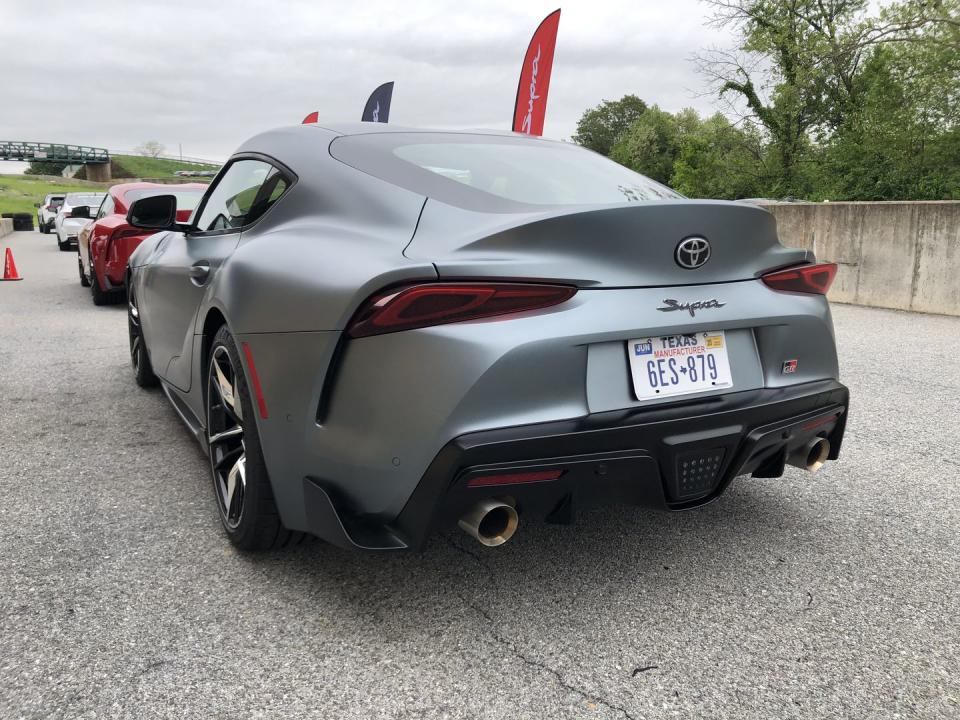
For a car that’s enjoyed-or been victimized by-a steady long-term drip of photos and information, the Supra still looks wild when you finally see it in person, all curves and haunches, an Alfa 8C Competizione but more dramatic.
“It’s a rear three-quarters car,” says Alex Shen, studio chief at Toyota’s Calty Design Research. “We started with the rear three-quarter view and designed the car from there.”
The Supra is quite faithful to the FT-1 concept, but it lost the concept’s towering rear wing. “That’s OK,” says Shen. “We have a feeling that owners and the aftermarket are going to take care of the wing.”
While design gospel always seems to stress short overhangs-tires pushed to the corners as a Platonic ideal-the Supra has some healthy overhangs, particularly at the rear. In fact, while the Supra is about the same length as the small Toyota FT-86, its wheelbase is four inches shorter. Shen explains that overhang is often unfairly vilified when it comes to automotive aesthetics.
“It all depends on what angle you’re at when you’re looking at the car,” he says. We’re sitting a bit behind a Supra, looking down its flank. “See that front fender, how you can see the whole shape of the fender? With less overhang, the fender would just sort of disappear. Really, overhang is only noticeable if you’re looking straight at the car in profile.”
And if you do that, you might notice that a lot of attractive cars eschew the wheels-to-the corners look. “Next time you see a Porsche 911, look at it from the side,” he says. “Tons of overhang.”
Notes of Style
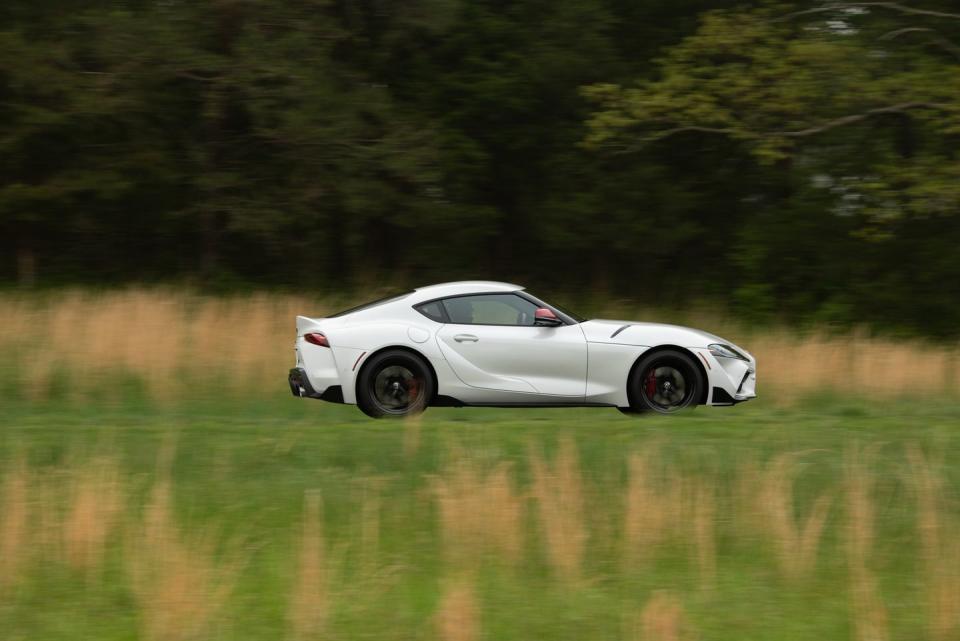
In a stylistic statement of intent, the Supra’s crisp double-bubble roof means that there’s no sunroof option. Unlike Chevrolet with the current bubble-topped Camaro, Toyota isn’t going to stamp a whole different flat roof panel to accommodate a sunroof. That means less weight up top and more room for helmets, which is important for a car that comes with a National Auto Sport Association membership and a high-performance track day.
The Supra does have some fakery going on with some of its blocked-off vents (behind the front fenders, ahead of the rear ones), but Toyota figures owners can make those functional if they want. Like the '90s A80 Supra of Fast and Furious fame, this one is going to get modded. So Toyota actually set it up to enable that in certain ways.
Chief engineer Tetsuya Tada said that cooling is the biggest problem once tuners start upping the horsepower, because basically nobody ever puts on a bigger radiator before they jack up the boost. So the Supra’s cooling system is overbuilt, to some degree. They’d rather not you chip it and then have your 3-liter straight-six go straight 3 Mile Island under that clamshell hood (which has dual latches, in one of many nods to the A80 Supra).
Likewise, they’d rather not have you start drilling holes everywhere. So, for instance, there are already threaded holes in place for strut tower braces-on the passenger side, the airbox even has an indentation for the brace. But why is there no strut tower brace in the first place? Because the car is so stiff already that the extra buttressing actually makes it too stiff for the dynamic preferences of Herwig Daenens, aka “Master Driver,” the Dutch race driver responsible for the Supra’s sweet handling.

I climb in for a ride around the track and he elaborates. “With the front end too stiff, you get understeer,” he tells me as he chucks the Downshift Blue Supra into a howling drift and I glance at the corner apex out of my side window.
“I wanted a car that you don’t just steer with the steering wheel. This car, you steer with your right foot as well. Many cars, when the rear end starts to slide, that’s it-it’s gone. This one, you can hold it there.” He then demonstrates by tackling the fast right-hand turn 11 completely sideways, paying no heed to the sturdy wall lurking just beyond the edge of the pavement. Here, as in the C7 Corvette and numerous BMWs and Ferraris, an electronic locking differential allows the Supra to get smoothly sideways without snapping into a spin.
On the Road
When it’s my turn behind the wheel, I stick with the intermediate traction-control mode, dubbed “Traction”, rather than full VDC off. This track may be only 12 years old, but its lack of runoff is old-school-lots of walls, not far from the racing line. And anyway, Traction mode will let you get somewhat sideways before subtly cutting power.
The first thing you notice about the Supra is that it doesn’t at all feel like it needs more power. With a 0-60 time of 4.1 seconds, it’s already the quickest Toyota ever built. The Supra is a light car, less than 3,400 pounds, with the BMW six's 335 horsepower (and 365 lb-ft of torque) running through the ubiquitous and utterly competent ZF8 automatic.
So it boogies. None of the straights on Shenandoah are very long, but you’re hitting close to 120 mph on the back straight and it’s still pulling hard.
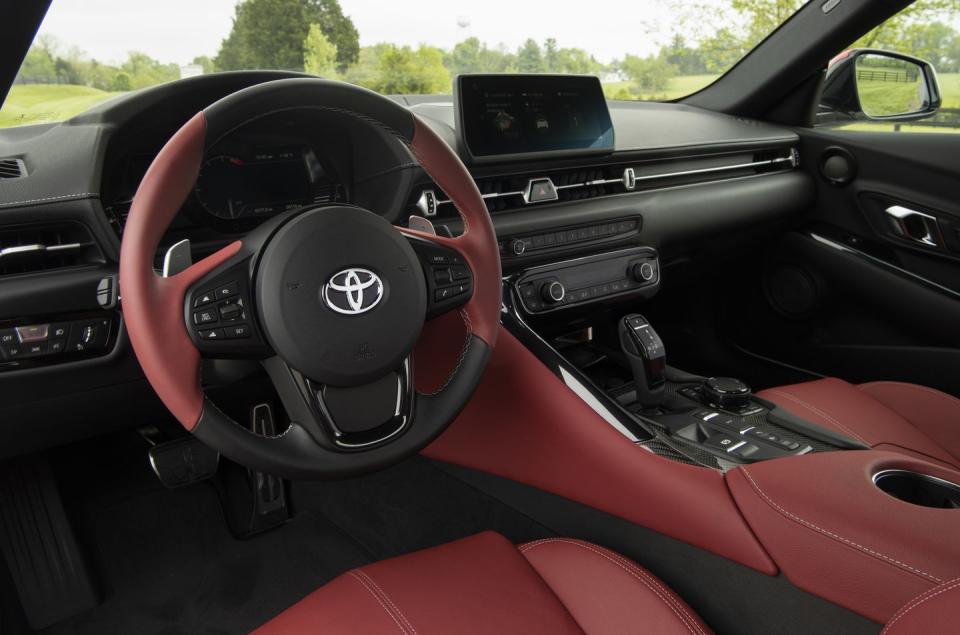
The second thing you notice is that there’s a ton of grip. The Supra manages to be both stable in long sweepers and agile in esses that force the suspension to load and unload side-to-side. Any car with a less-than-totally dialed chassis could look really bad at this circuit, which Summit Point describes as “a no holds barred technical challenge that will take years for drivers to master.”
The Supra maintains body control no matter what, and per Daenens, you can control the car’s attitude with the brakes and throttle. It’s neutral, and so forgiving that I contemplated going VDC off and trying to hang the tail out all the way around turn 1, but then I remembered that my title is not Master Driver. But I suspect that you won’t see a lot of Supras in the ditch outside the nearest Cars and Coffee.
Actually, how any Supras you’ll see anywhere is an open question. Toyota says they got 40,000 “hand-raisers,” for the car, whatever that means. Beyond the first 1,500 Launch Edition models, Toyota isn’t talking numbers, but it sounds like they’re realistic about the Supra’s low-volume expectations. That’s why they partnered with BMW this time around, developing the car in tandem with the BMW Z4.
And hey, you could do worse than BMW as a partner, especially where engines are concerned. I don’t think anybody driving McLaren F1 is griping that it has a BMW engine.
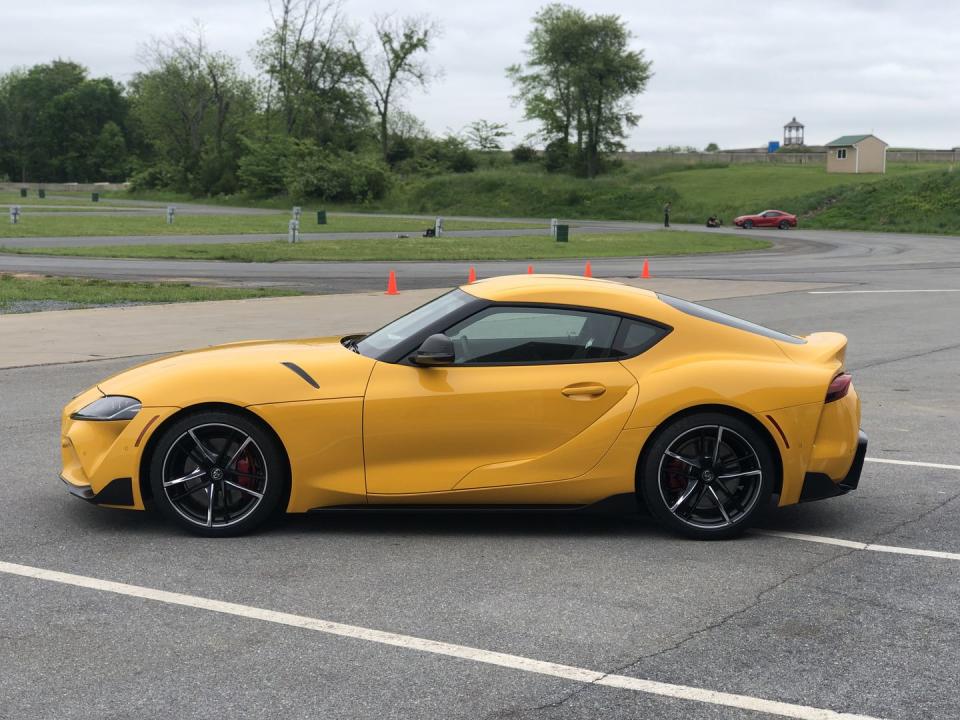
The GR Supra starts at $50,920 for a 3.0, running to $56,180 for a Launch Edition. The only options are a driver-assist package ($1,195) and JBL audio and navigation ($2,460). That base price is notable because a 1996 Supra Turbo was $50,500-in 1996 dollars, which equates to about $82,000 today-and all the key performance parts (e-diff, adaptive dampers, forged wheels) are standard.
Just as 1996 dollars are subject to inflation, so is 1996 horsepower, and there’s a contingent of fans who wish the 2020 GR Supra treaded supercar territory like its 90s predecessor-which at this point might mean giving it something more like 600 horsepower. But the goal, this time around, wasn’t to build an unattainable tech dreadnought and hope for it to cast happy moonbeams upon the entire company’s lineup. This isn’t a numbers car.
Nor is it a halo car, really. Obviously, Toyota dealers will love parking a Supra in the front window, and perhaps a dreamer or two will wander in to take a look and leave with the keys to an 86. But I think the real significance of the Supra is that it demonstrates a newfound-or maybe newly rediscovered-passion for cars from a company known for mass-market transportation.
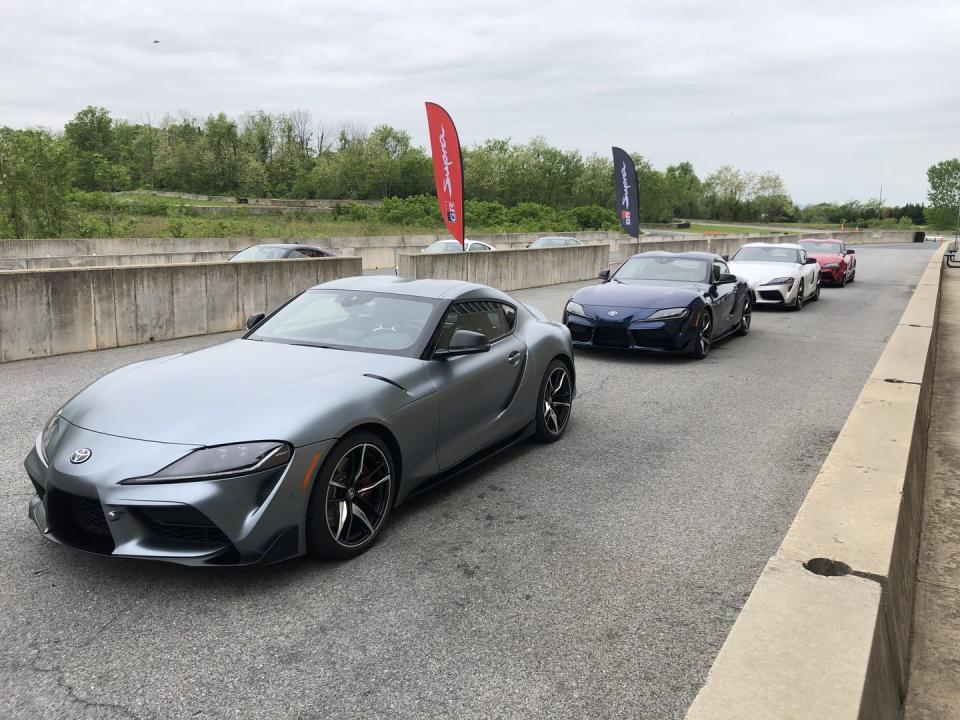
Toyota’s president, Akio Toyoda, is a race driver who’s publicly decried boring cars. Of course the Supra is great to drive, but so is the $24,000 Corolla Hatchback XSE manual that I drove on the 12-hour round trip to Summit Point.
The first thing I did, every time I fired up that car, was press the button next to the shifter that activates rev-matching downshifts. Why? Because that’s fun. I mentioned that to a product manager at Toyota, who replied that the manual transmission take rate on the Corolla hatch is about twice what they expected.
People want fun Toyotas. On that front, the Supra sets a modern benchmark-and I don’t think it’s the final word.
('You Might Also Like',)

